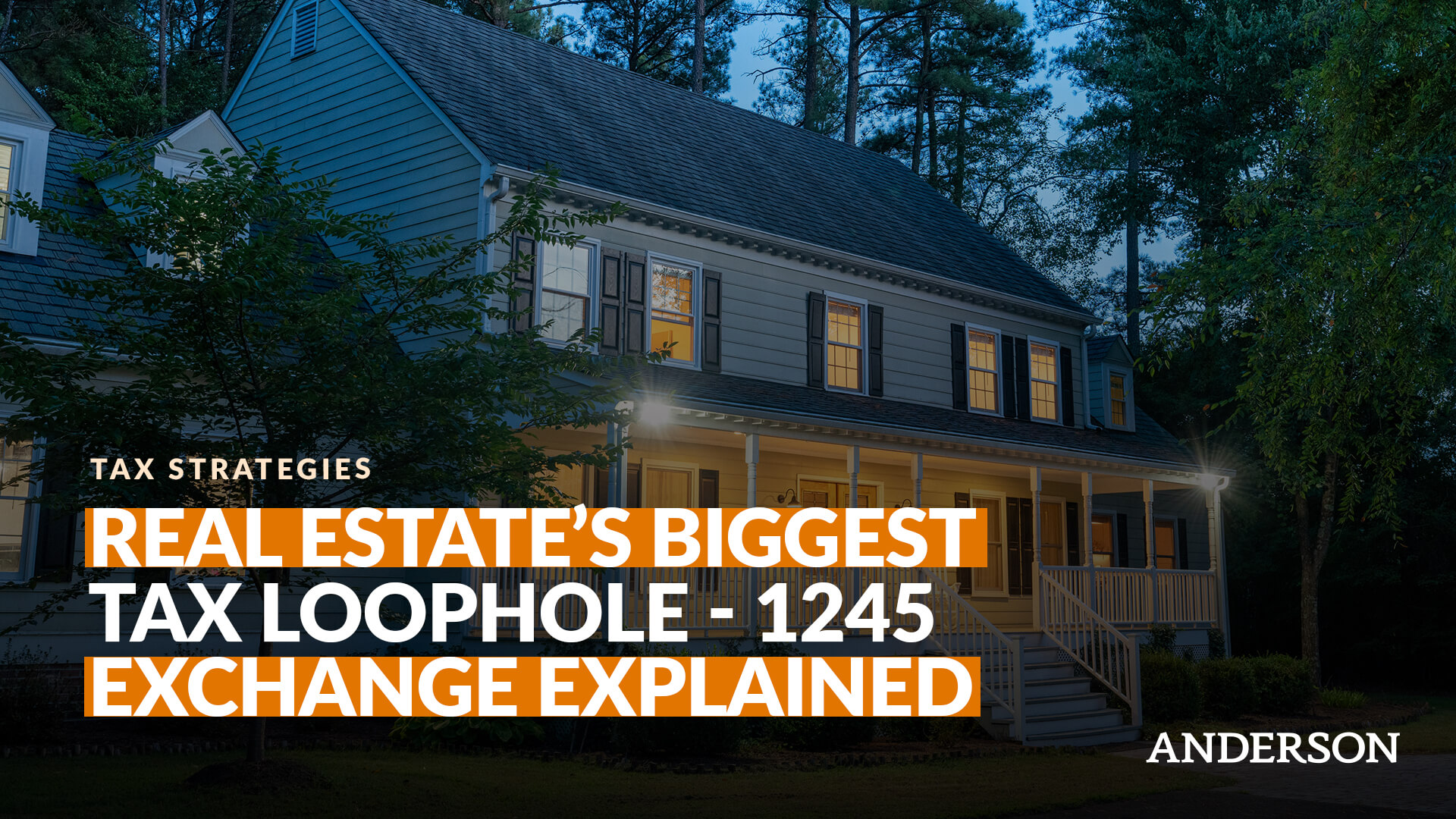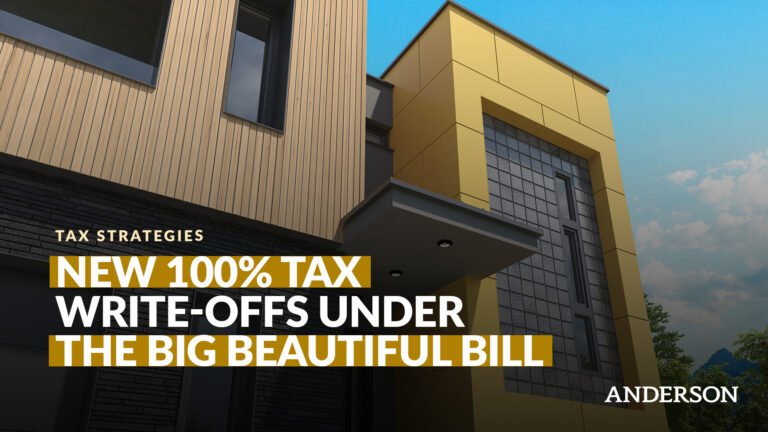
When it comes to investing in real estate, cash flow and appreciation are important—but your tax strategy ultimately determines how much you keep. Two investors can buy the same property, earn the same rental income, and end up with completely different after-tax returns.
That’s because the real winners know how to use real estate tax strategies like Cost Segregation and the Section 1245 Exchange to lower income taxes, accelerate tax deductions, and protect gains from the sale of a property.
These aren’t off-limit deductions—they’re real estate tax loopholes built into U.S. tax laws to reward property owners who help grow housing and economic stability across the United States.
If you want to see how it all works in practice, you can watch me break it down here: Watch the full explanation on YouTube. Ready to uncover your potential tax savings? Request a FREE Cost Segregation Benefit Analysis today, and a CSA Partners specialist will contact you to explore how cost segregation can benefit your real estate investments.
What Is Cost Segregation & Why Should Investors Care?
Cost Segregation is a powerful tax tool that allows property owners to reclassify assets inside a residential rental property or commercial building into shorter depreciation schedules.
Normally, you depreciate the building over 27.5 years (for residential properties) or 39 years (for commercial properties). But when you perform a cost seg study, you separate components like:
- 5-year property: flooring, cabinets, appliances
- 7-year property: interior finishes, lighting
- 15-year property: land improvements like parking lots or fencing
By identifying these items, you can accelerate depreciation and claim larger deductions earlier, reducing income taxes and improving cash flow.
For example, a $200,000 short-term rental might normally allow only $6,000 in depreciation per year. With cost segregation, you could claim $40,000–$60,000 in year one, freeing up capital to reinvest or pay down debt.
How Does Bonus Depreciation Multiply the Benefit?
Recent tax laws make certain assets eligible for bonus depreciation, allowing you to write off 100% of their value in the year you place the property in service.
This rule supercharges the value of cost seg because instead of spreading deductions across 5, 7, or 15 years, you can take them all immediately.
For real estate investors, this means your trade or business gains a significant cash advantage without altering your operations. You can pay down loans, make improvements, or even buy another investment property—all with money you would have otherwise sent to the IRS.
Remember, a dollar saved in taxes today is worth far more than a dollar saved years from now.
What Happens When You Sell & Face Depreciation Recapture?
Here’s where most property owners get nervous. When you sell a residential rental property, the IRS may want to “recapture” the depreciation you took—taxing that portion at your ordinary income rate or capital gains tax rates.
But Cost Segregation doesn’t make that worse—it actually makes it more strategic. You can use a Section 1245 Exchange to revalue your short-life assets (like flooring or appliances) at fair market value when you sell.
Since these items naturally lose value over time, your recapture amount drops dramatically. You’re not avoiding taxes—you’re simply reflecting the real market value of worn assets. That means less recapture and more money in your pocket.
Request a free consultation with an Anderson Advisor
At Anderson Business Advisors, we’ve helped thousands of real estate investors avoid costly mistakes and navigate the complexities of asset protection, estate planning, and tax planning. In a free 45-minute consultation, our experts will provide personalized guidance to help you protect your assets, minimize risks, and maximize your financial benefits. ($750 Value)
How Does a Section 1245 Exchange Create Permanent Tax Savings?
A Section 1245 Exchange is the next phase of smart tax planning. It focuses on the 5, 7, and 15-year property you identified during your cost seg study.
When you sell, instead of paying full gains from the sale on those items, you can document how much they’ve depreciated in real-world terms.
Example: Let’s say you took $50,000 in accelerated depreciation. A proper 1245 valuation might show that only $10,000 of those assets still have value. That means you only pay recapture on $10,000—not $50,000.
That difference represents permanent tax savings, not just deferral. It’s one of the most overlooked opportunities in real estate investing.
Does Cost Seg Interfere with a 1031 Exchange?
No. Cost Segregation, Section 1245, and 1031 Exchanges work seamlessly together when properly coordinated.
Here’s how the strategies align:
- Cost Segregation: Creates early deductions and improves cash flow.
- 1031 Exchange: Defers capital gains tax rates when reinvesting profits.
- Section 1245 Exchange: Reduces depreciation recapture after the sale.
This combination helps property owners grow portfolios tax-efficiently and keep their money compounding in new deals. You can even perform a cost seg 1031 strategy across multiple properties to balance timing and deductions year-to-year.
Who Qualifies for Cost Segregation & Bonus Depreciation?
If you own investment property worth more than $150,000 (excluding land value) in the United States, you’re likely eligible for bonus depreciation and Cost Segregation benefits.
That includes:
- Short-term rentals (STRs) and Airbnbs
- Long-term residential rentals
- Multi-family buildings
- Self-storage and mixed-use properties
Even if you bought your property years ago, you can still run a study and catch up on missed depreciation with a simple IRS form. You don’t need to amend previous returns to file your taxes correctly going forward.
What Are the Biggest Myths About Cost Seg & Real Estate Tax Loopholes?
Myth 1: “You can only do it the year you buy.”
False. You can conduct a study years later and claim missed deductions retroactively.
Myth 2: “It’s a red flag for an audit.”
Not if done properly. The IRS has clear guidelines for what qualifies as a quality study, and compliant reports are fully defensible.
Myth 3: “It’s only worth it for commercial buildings.”
False. Even single-family residential rental property and short-term rentals qualify for significant tax deductions.
Myth 4: “It ruins a 1031 Exchange.”
No. It actually enhances it when paired with a Section 1245 Exchange for recapture reduction.
What’s an Example of How These Strategies Work Together?
Let’s say you buy a $300,000 duplex:
- You perform a cost segregation study, reclassifying 30% ($90,000) of the assets into shorter lives.
- Because the assets are eligible for bonus depreciation, you write off all $90,000 in Year 1.
- You use the savings to improve the property and increase rent.
- When you sell, you perform a Section 1245 Exchange, which proves that most short-lived items have no remaining value.
- You then complete a 1031 Exchange to defer gains from the sale into your next property.
You’ve lowered property taxes, deferred long-term capital gains, and reduced recapture—all while improving your portfolio’s performance.
How Can You Use These Tools for Better Tax Planning?
If you’re serious about building long-term wealth, it’s time to integrate these strategies into your annual tax plan.
Here’s how to start:
- Assess your properties. Identify which assets are eligible for bonus depreciation and where Cost Segregation could have the greatest impact.
- Work with a qualified advisor. Ensure your trade or business structure supports your goals and accurately allocates depreciation.
- Plan for exit early. When it’s time to sell, coordinate your Section 1245 Exchange and cost segregation 1031 timing to minimize capital gains tax rates.
- File your taxes accurately. Maintain accurate records of component values, improvements, and studies to ensure audit readiness.
When done right, these strategies can transform how your investment property performs—turning every tax return into a roadmap for reinvestment and long-term wealth.
Bottom Line: Use the Code the Way It Was Written
The U.S. tax laws weren’t built to punish property owners—they were built to reward those who provide housing and keep the economy growing.
By combining Cost Segregation, Section 1245, and 1031 Exchanges, you can:
- Lower your income taxes
- Maximize your tax deductions
- Defer or reduce capital gains tax rates
- Protect your equity from unnecessary property taxes
That’s the essence of smart tax planning for real estate investors—using the system as it was designed to grow your wealth, protect your income, and keep more of what you earn. Want to learn more about applying this strategy and qualifying for more tax benefits? Schedule a free 45-minute consultation with Anderson Advisors. We’ll review your current situation and develop a personalized plan that minimizes your tax liability and protects your investment portfolio.















